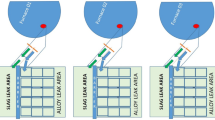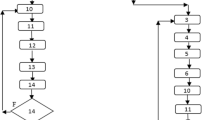Abstract
This paper addresses an interval type-2 fuzzy (IT2F) hybrid expert system in order to predict the amount of tardiness where tardiness variables are represented by interval type-2 membership functions. For this purpose, IT2F disjunctive normal forms and fuzzy conjunctive normal forms are utilized in the inference engine. The main contribution of this paper is to present the IT2F hybrid expert system, which is the combination of the Mamdani and Sugeno methods. In order to predict the future amount of tardiness for continuous casting operation in a steel company in Canada, an autoregressive moving average model is used in the consequents of the rules. Parameters of the system are tuned by applying Adaptive-Network-Based Fuzzy Inference System. This method is compared with IT2F Takagi–Sugeno–Kang method in MATLAB, multiple-regression, and two other Type-1 fuzzy methods in literature. The results of computing the mean square error of these methods show that our proposed method has less error and high accuracy in comparison with other methods.













Similar content being viewed by others
References
Castro JR, Castillo O, Melin P, Rodriguez-Diaz A (2008) A hybrid learning algorithm for interval type-2 fuzzy neural networks in time series prediction for the case of air pollution. In: Annual conference of the North American fuzzy information processing society—NAFIPS, pp 1–6
Celikyilmaz A, Türksen IB (2009) Modeling uncertainty with fuzzy logic with recent theory and applications. Studies in fuzziness and soft computing. Springer, Berlin
Das A, Maiti J, Banerjee RN (2010) Process control strategies for a steel making furnace using ANN with Bayesian regularization and ANFIS. Expert Syst Appl 37:1075–1085
Fazel Zarandi MH, Turksen IB, Torabi Kasbi O (2007) Type-2 fuzzy modeling for desulphurization of steel process. Expert Syst Appl 32:157–171
Fazel A, Saraee M, Shamsinejad P (2010) Mining time series data: case of predicting consumption patterns in steel industry. In: 2nd international conference on software engineering and data mining, pp 501–505
Fernandez JMM, Cabal VA, Montequin VR, Balsera JV (2008) Online estimation of electric arc furnace tap temperature by using fuzzy neural networks. Eng Appl Artif Intell 21:1001–1012
Hathaway RJ, Bezdek JC (1993) Switching regression models and fuzzy clustering. IEEE Trans Fuzzy Syst 1:195–204
Liang Q, Mendel JM (2000) Interval type 2 fuzzy logic systems: theory and design. IEEE Trans Fuzzy Syst 8:535–550
Mamdani EH (1974) Application of fuzzy algorithms for control of simple dynamic plant. Proc IEEE 121:1585–1588
Miranda LCM, Lima CAS (2010) A new methodology for the logistic analysis of evolutionary S-shaped processes: application to historical time series and forecasting. Technol Forecast Soc Chang 77:175–192
Ouyang CS, Liu SL (2009) An approach for construction and learning of interval type-2 TSK neuro-fuzzy systems. IEEE Korea August 20–24
Slany W (1996) Scheduling as a fuzzy multiple criteria optimization problem. Fuzzy Sets Syst 78:197–222
Türksen IB (1986) Interval-valued fuzzy sets based on normal forms. Fuzzy Sets Syst 20:191–210
Türksen IB (1995a) Fuzzy normal forms. Fuzzy Sets Syst 69:319–346
Türksen IB (1995b) Type I and interval-valued Type II fuzzy sets and logics. In: Wang PP (ed) Advances in fuzzy theory and technology. Bookright Press, Raleight, pp 31–82
Türksen IB (1996) Fuzzy truth tables and normal forms. In: Proceedings BOFL’96, 15–18 December 1996, TIT, Nagatsuta, pp 7–12
Türksen IB (1999) Type Ι and Type ΙΙ fuzzy system modeling. Fuzzy Sets Syst 106:11–34
Türksen IB, Fazel Zarandi MH (1998) Fuzzy system models for aggregate scheduling analysis. Int J Approx Reason 19:119–143
Ying L, Jun Z, Wei W (2010) A time series based prediction method for a coke oven gas system in steel industry, ICIC Express Lett 1373–1378
Zadeh LA (1965) Fuzzy sets. Inf Control 8:338–353
Zadeh LA (1975) The concept of a linguistic variable and its application to approximate reasoning-I. Inf Sci 8:199–249
Zhang Q, Mahfouf M (2011) A hierarchical Mamdani-type fuzzy modelling approach with new training data selection and multi-objective optimisation mechanisms: a special application for the prediction of mechanical properties of alloy steels. Appl Soft Comput 11:2419–2443
Author information
Authors and Affiliations
Corresponding author
Rights and permissions
About this article
Cite this article
Fazel Zarandi, M.H., Gamasaee, R. Type-2 fuzzy hybrid expert system for prediction of tardiness in scheduling of steel continuous casting process. Soft Comput 16, 1287–1302 (2012). https://doi.org/10.1007/s00500-012-0812-x
Published:
Issue Date:
DOI: https://doi.org/10.1007/s00500-012-0812-x




